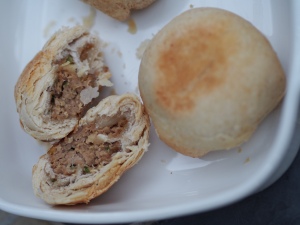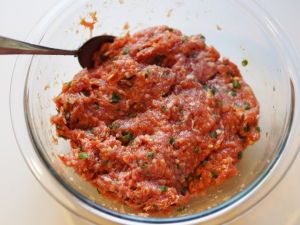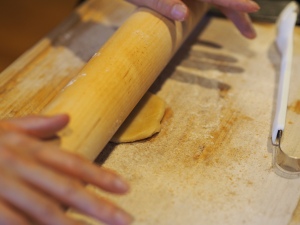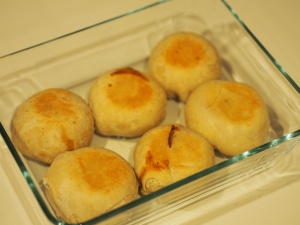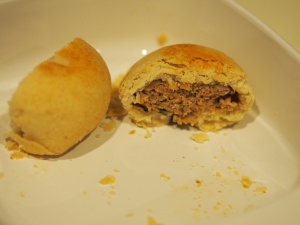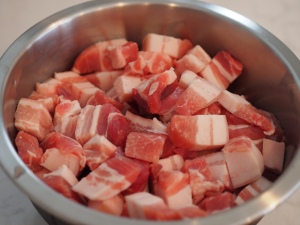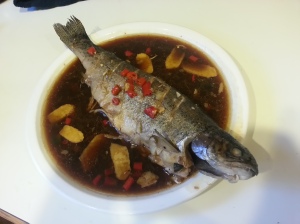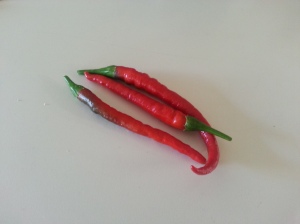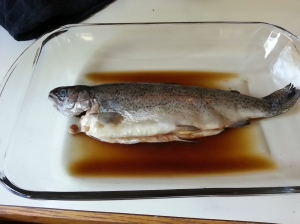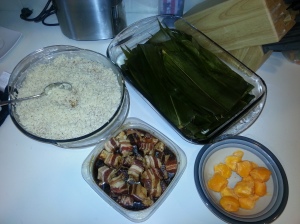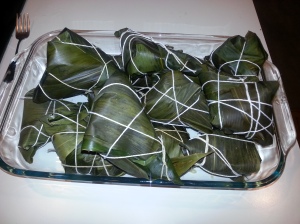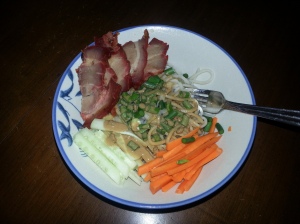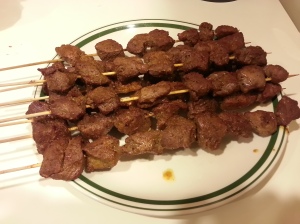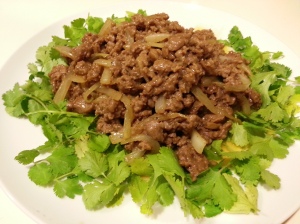If you have ever had Chinese mooncakes, the chances are you had the Cantonese-style ones, which are usually filled with various sweet fillings (good for long preservation) such as coconut crunch, red bean paste, etc and the outer layer is a hardened skin (easy to package).
It is much easier to get Cantonese-style mooncakes as they preserve much better and longer than the much more demanding type: Suzhou-style mooncakes. It is the best when just fresh out of the oven to enjoy Suzhou-style mooncakes and the flakey crispy layered outer skin and the meat filling inside makes it literally impossible to mass package with preservatives without breaking it or spoiling its flavor.
I am from Shanghai, where we consume the Suzhou-style mooncakes the most. It is a ritual to line up after the traditional dimsum shop on the day of mid-autumn festival and enjoy the hot mooncakes with family members while appreciating the full moon. 🙂
Since it is a lengthy and labor intensive process, I will jump right into the topic of making them today.
Ingredients:
Filling:
1 lbs of 70% ground pork
1 medium egg
3 cloves of garlic, very finely minced
1.5 tbsp of ginger, very finely minced
3 tbsp of green onion (only the green portion), finely minced
Sesame oil
3-4 tbsp of Sugar
2 tbsp of Aged soy sauce
2-3 tbsp of Soy sauce
Salt and pepper
Oil dough:
1 – 1 1/4 cup of all purpose flour
4-5 tbsp of lard
Water dough:
2 cups of all purpose flour
6 tbsp of WARM water
4-5 tbsp pf lard
5-6 tbsp of sugar
Now crack the egg into the ground pork and mix all the filling ingredients all at once with hand. Make sure the filling is not too runny. Cover the filling up and let sit in the fridge to cool for at least 30 min.
We will make the water dough first. Let the lard melt a bit in the warm water. Mix the flour, water, lard and sugar well, you should be able to create a dough that stretches to semi-transparent smooth texture. Wrap the dough with plastic wrapper and let sit in room temperature for at least 30 min.
We make the oil dough second. Use hand to mix the flour and the lard, throughout the mixing process the lard will melt slowly and combine well with the flour. You should be able to get one big dough to form but upon touching, the dough has some flakey texture and that is ok for the oil dough. Wrap the dough with plastic wrapper and let sit in room temperature for at least 30 min.
Now divide the water dough and the oil dough into about 16 equal-sized pieces and make sure the once you are not using are still being wrapped so that the doughs do not dry out while you make other mooncakes. Roll out one piece of the water dough, spread one piece of the oil dough onto the rolled out water dough. Mix with hand, form a bigger ball, and roll out the mixed dough again. Roll the dough out to as thin as you can. A good estimate of thickness is if you were to divide up the filling to 16 equal portions, can your dough wrap all over each portion. Turn the oven onto 350 F.
Once the mixed dough is rolled out to desired size, add the filling and close it up on the top. Place the wrapped mooncake with the closed-top down, use your hand to re-shape the mooncake a bit to make sure it is round. Bake with top down for 15 min and flip and bake for another 15 min. Flip again and give it a finishing touch and bake for another 5 min. Do this for all the 16 mooncakes. If you would like a more baked look on the outside, give the exterior a light brush of egg-wash for the last couple of minutes in the oven.
If you cannot finish them all at once, I suggest you bake the once you want to save for later at 320F each side for 15 min and finish with another 5 min. And then put the mooncakes side by side in a container straight to the freezer. You can reheat them up in microwave for a couple of minutes and then into a preheated oven at 350F for another 10-15 min. Make sure you eat them all within a few days to ensure the best tasting!
Happy mid-autumn festival everyone! 🙂
PS. for the first-timer eaters, the filling should be succulent and juicy, bursting with flavors of the pork with a hint of sweetness and saltiness and all other supporting spices. The higher the fat content of the ground pork, the better it helps with the juiciness. The skin should be flaked easily, presenting thin crispy layers. It is so sumptuously delicious that you will never look back! 🙂
